Farming is one of the activities that made civilization possible in the first place. Deep down (or a couple of generations back) we’re all farmers and it’s not a surprise that farming is a popular board game theme too. I found out there’s plenty of competition when making a 10 Best Farming Board Games list for 2023.
Table of Contents
| Jump to a specific title in the article by clicking the links below. | Tags | Check Price | |
|---|---|---|---|
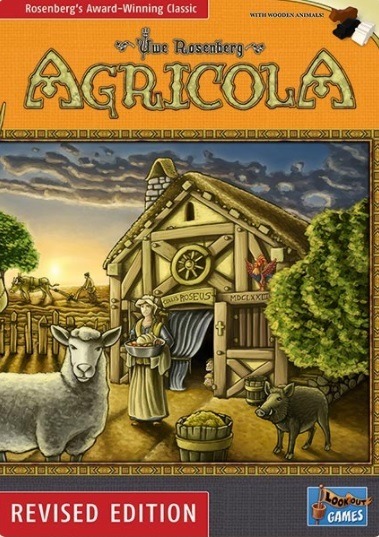 | Agricola | 17th Century farming, worker placement | $$$ |
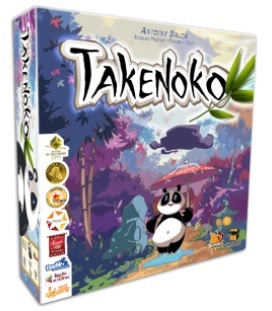 | Takenoko | Japan, Panda, gardening | $$ |
 | Tzolk’in: The Mayan Calendar | Mayans, dynamic game board | $$$ |
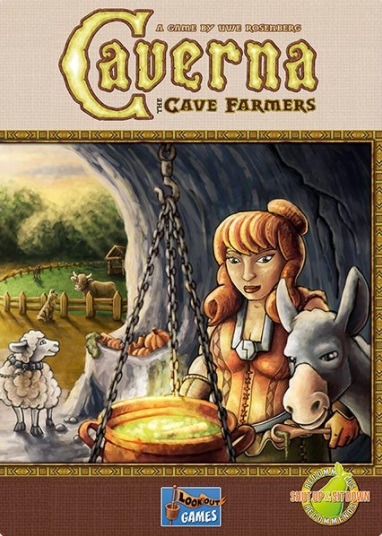 | Caverna: The Cave Farmers | Dwarves, worker placement | $$$$ |
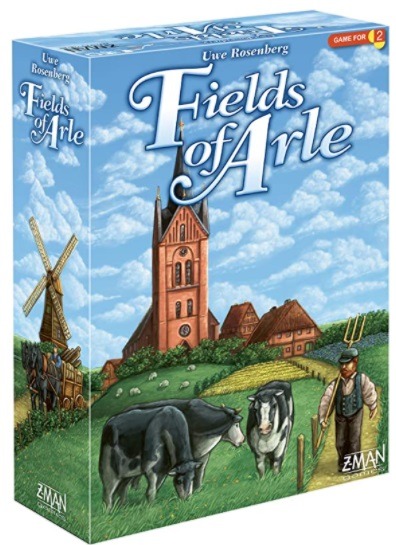 | Fields of Arle | North Germany, worker placement | $$$$$ |
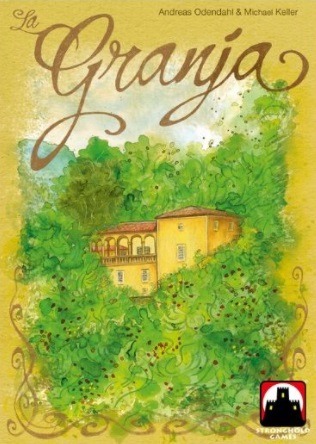 | La Granja | Mallorca, action dice | $$ |
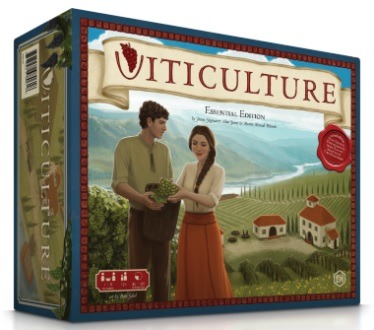 | Viticulture Essential Edition | winemaking, worker placement | $$$ |
 | Fields of Green | modern-day farming tableau/engine building | $$ |
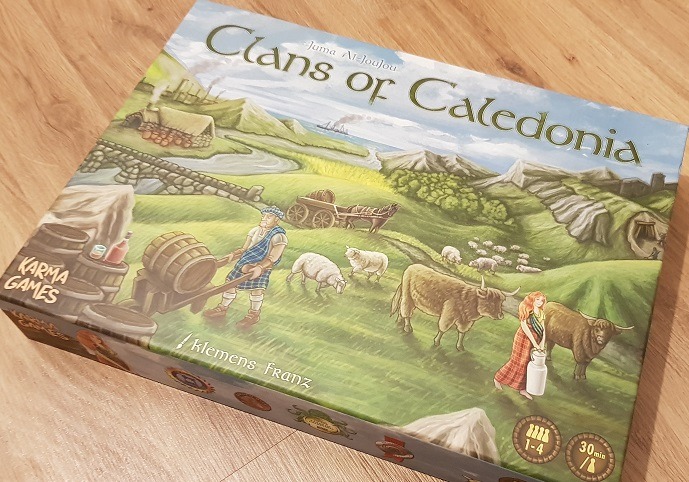 | Clans of Caledonia | Scottish Clans, economy | $$$ |
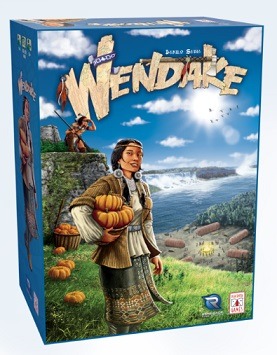 | Wendake | Native Americans, grid action selection | $$$ |
Why Farming?
If you’ve ever grown something yourself, you know the immense feeling and pleasure of watching things grow out of nothing. Grass, trees, flowers, and animals. If you take good care of them, they will thrive.
And you cherish them too. If you grow your own food, you know that your tomato tastes hundreds of times better (even if that’s not really true) than the one you buy at a supermarket. You’ll also be extra careful not to let it rot, just because you know what it takes to grow it.
Now multiply this and you become a farmer, looking after acres of fertile lands, lush forests, and herds of animals. You’re a shepherd, a forester, a mechanic, a builder, a veterinarian, a cook, and an economist all at the same time. A challenge to take on and satisfaction after work well done.
Best Farming Board Games for 2023
Just as farming comes in many shapes across history and the globe, so are our games different in theme, yet they still all encompass that farming spirit.
Farming is a broad term. From a modern tractor farm to hunter-gatherers, there is something for everyone on the list. Choose games by the theme and mechanics they are shaped around and check out the conclusion for more specific advice on what to buy.
I think you will find the descriptions of the games intuitive and natural: first, there are some general facts, followed by the theme (what you play), and mechanics (how you play it), and ended with a recap of the game’s main features and available expansions.
After that, there will also be an affiliate link to the Amazon store. I am an affiliate and will earn a commission should you buy something following the link.
Agricola
| Designer | Uwe Rosenberg |
| Published in | 2007 (originally) |
| Players | 1-5 for the original game (1-4 for the Revised Edition) |
| Playing time | 30 minutes per player for the original game |
| Complexity | medium/heavy for the original game, other variants are simpler |

Theme
You are a 17th Century farmer, trying to survive and someday even thrive. You start with yourself and your spouse. Plow fields, plant crops, breed animals, upgrade your house and grow your family.
Mechanics
Agricola is a typical worker placement game. You start with two workers and for everything you want to do, you place a worker in an appropriate spot. You start with basic spots, while more advanced ones will become available later in the game.
Only one worker can occupy a spot and some are multifunctional (like Plow/Sow), so there is some strategy present as you compete for spots with other players.
Collecting resources is something you’ll be doing a lot until you get access to more advanced slots. There are several available (building materials, animals, food).
You can get more workers by increasing your family, but you must not forget to feed them, or you’ll get negative points. Luckily, you’re on a farm, so there are plenty of ways to get food: gather, bake bread, or slaughter animals. Getting a good food chain going should be one of your priorities.
To diversify play there are Improvements and Occupations which act as bonuses or wild cards, giving you better abilities (a bonus to production i.e.). Drawing certain cards can greatly affect the direction you’ll go with your farm.
As with every self-respecting euro game, the goal is to collect the most victory points. You do that mainly by renovating your house, growing crops, and breeding animals.
When the game ends (after 14 rounds), the points are tallied together and the winner is declared.
The game is quite hard for beginners. There are a lot of rules and interconnected moving parts and it’s hard to get a feel of the dos and donts.
But if they are guided through the learning process by an experienced mate, all those parts start coming together and become enjoyable. Agricola is a big game and it offers multiple strategies. You can do a bit of everything or specialize. Or just lay back and enjoy watching your farm grow.
Expansions/editions
Agricola Revised Edition from 2016 fixes some issues from the original:
- The pieces are now all carved from wood and are easier to handle.
- Occupation and Improvement card decks have been revised and streamlined, rewritten, and rebalanced. There is now less luck with the card draft, making the game fairer.
- Artwork and rules have received a small uplift as well.
It doesn’t, however, fix the box insert problem, the long playing time, and the fiddling with resources. It’s still the version you want to buy if you’re into Agricola, but not if you already have the original edition. Be prepared to buy the storage solution from 3d parts or do-it-yourself.
There are several expansions available for the big game, mostly in the form of new specially flavored decks of cards, based on historic events from different countries. Compilations also exist.
Agricola: All Creatures Big and Small (2012)
What if you only took a part of Agricola and perfected it, cutting out everything else? Enter All Creatures Big And Small, a two-player edition of Agricola, focuses on breeding animals. It’s shorter (30 minutes), and simpler, but it still retains that Agricola-feel and strategic gameplay. It’s one of the best and most accessible ways to experience Agricola.
Two expansions are available, adding 27 new buildings each and a Big Box, containing the base game with both expansions.
Agricola Family Edition (2016)
A simplified, shorter version of its big brother tries to bring Agricola into family homes. Card decks, player boards, and building restrictions are removed, making the game much more accessible, but also much simpler. Dumbed down, if I may be direct. While it’s a good tutorial for the big thing, it lacks replay value in itself.
Main features
- A complex farming game, allowing many paths to victory,
- a playful farming theme,
- plenty of difficult decisions to make,
- can be a brutal learning curve for beginners,
- a lot of (good) components demand good storage,
- a lot of replay value, still going strong after over a decade.
Takenoko
| Designer | Antoine Bauza |
| Published in | 2011 |
| Players | 2-4 |
| Playing time | 45 minutes |
| Complexity | light/medium |

Theme
Set in feudal Japan, the Emperor has entrusted you with taking care of his panda bear and cultivating bamboo in the gardens, where the panda lives.
The first thing you will notice are fantastic components. From different tiles of bamboo forest, stackable wooden bamboo pieces, to panda and gardener miniatures, down to the rulebook. Everything is gorgeous and has a style that reminds me of anime and blossoming cherry trees.
Mechanics
The game is fairly simple and can be taught to new players quickly. You only do two things on your turn.
First, you roll the weather die, which gives bonuses (extra action, bamboo growth, panda move, etc), then you get to take two actions, which must be different. Placing a new garden tile, irrigating, using the gardener, moving the panda, or drawing an objective card are some available actions.
Objective cards are the ones that dictate how you will play the game. There are three types: plot objectives (the way you place the tiles), panda objectives (panda eats a certain type of bamboo), or gardener objectives (growing a type of bamboo to a certain height).
Objectives are well-balanced and complement each other well. They grant you victory points and that’s how you win the game. Or you can chill, watch the garden grow, and be a winner that way.
Expansion
Chibis is an expansion that adds a second panda to the garden. It’s a she, so that means baby pandas! New bamboo pieces and objective cards are included.
Main features
- The components look and feel top-notch.
- Quick and simple to play.
- Theme and mechanics go very well together.
Tzolk’in: The Mayan Calendar
| Designers | Simone Luciani, Daniele Tascini |
| Published in | 2012 |
| Players | 2-4 |
| Playing time | 90 minutes |
| Complexity | medium/heavy |
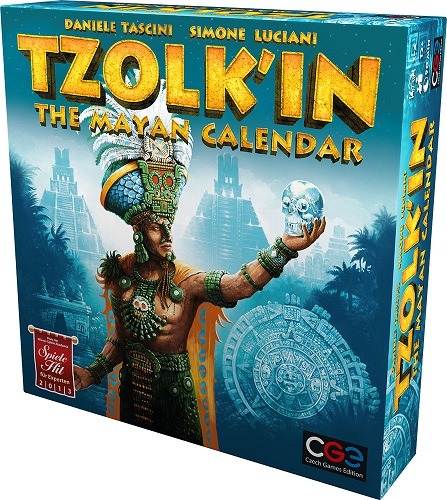
Theme
It’s not hard to guess where our next game is set in: the world of Mayas, the legendary Meso-American civilization. (Have you seen Mel Gibson’s movie Apocalypto?) The theme and artwork are very Mayan, making it stand out from the rest.
Mechanics
Hand in hand with the Mayan them goes the main attraction of the game: the moving cogs.
Tzolk’in is a worker placement game, very similar to many others. You place and remove your workers from slots, carrying out actions that are on them. Taking resources, building buildings, pleasing the gods – it all converts to victory points.
And here’s where the cogs come in. They provide a moving platform, changing the action slots your workers are on with every turn.
On your turn, you have two actions available. You either place any number of workers on the cogs (possibly paying corn to feed them) or you remove them, carrying out actions that they are currently on.
That makes Tzolk’in a very strategic game. You must plan several rounds ahead, placing workers and then removing them when they’re exactly in the slot you need. There’s very little luck involved and player interaction is limited to competing for slots, so it’s all about planning your path to victory. There are multiple available.
It’s also this deterministic nature of the game, that is its biggest shortcoming. It doesn’t have a lot of exciting moments, but if you’re a true strategist, you will be in heaven, without any random factors to destroy your schemes.
Expansion
One expansion exists, Tribes & Prophecies. It adds 13 tribes with special abilities, making the game more diverse. The lack of exciting moments is partly fixed by the 13 prophecies (events, that the players must prepare for). Moreover, components for the fifth player are included. Overall, a very good complement to the base game.
Main features
- Original theme.
- Innovative moving board.
- Low luck factor with many paths to victory.
- Little player interaction.
Caverna: The Cave Farmers
| Designer | Uwe Rosenberg |
| Published in | 2013 |
| Players | 1-7 |
| Playing time | 30 minutes per player |
| Complexity | medium/heavy |

Theme
Take Agricola and put it into a dwarf-flavored theme. Your pair of bearded dwarfs live in a cave and it’s your job to mine it and cultivate the surrounding land. Fields, animals, mines, expeditions – the game is full of things to do.
Mechanics
The first thing that pops into your eyes when you open the heavy box, is the enormous amount of animals, resources, and other stuff. The game comes with components for seven players, so your next move should be to make a plan on how to wisely store all this wood for effective setup and teardown.
Gameplay-wise, Caverna is a worker placement game, very similar to Agricola. But the mechanics are revised and streamlined, with some things (like card decks) gone and some new mechanics (like mining, buying weapons, and sending your dwarfs on quests) and animals (dogs and donkeys) introduced.
To sum up, Uwe hasn’t tried to reinvent the wheel with Caverna. He just did what he does best: he took his great worker-placement mechanics with all the intricate bits and bolts, put them into a new theme, and reworked the things he thought he didn’t like from the game before. I like how the games reflect his evolution as a designer.
Caverna is a very good game, but I’m not sure you need it if you already have Agricola. They are similar but still different enough that they are rightfully different games. It comes down to your taste – but if you like one, you will like the other.
Expansions/editions
The Forgotten Folk is pretty much a mandatory expansion for Caverna. It adds eight more races (like elves and trolls; together with the dwarfs), with each race having strengths and weaknesses with special rooms and resources.
Several smaller expansions exist, usually adding new tiles (rooms).
Caverna: Cave vs Cave is a slightly simplified, two-player version of the game. It is a good entry point for the big thing, but also more than a decent game itself. If you’re considering Caverna, I’d suggest taking a look at it, as it’s also significantly cheaper than its big brother.
Read my review on Caverna: Cave vs Cave here
Main features
- Retains all the good things of Agricola: a complex farming game with a lot of paths to success and a lot of replay value.
- Thematically more pronounced, with several new ideas, offers a fresh approach to Uwe’s worker placement mechanics.
- The box could contain fewer components (maybe just for four or five players) and thus be cheaper.
Fields of Arle
| Designer | Uwe Rosenberg |
| Published in | 2014 |
| Players | 1-2 |
| Playing time | 60 minutes per player |
| Complexity | medium/heavy |

Theme
This is the game where we finally find out the root of Uwe’s obsession with farming. Fields of Arle is set in East Frisia, Uwe’s homeland.
Expect to do things like grow flax, cut peat, colonize the moor and build dikes, together with more classic stuff like growing and harvesting grain, breeding, milking or shearing animals, and cutting wood.
Mechanics
Again, placing your workers is the main thing in Fields of Arle. A lot of slots are available, from simple resource gathering to more complicated ones, like making wool or carriages.
Game alternates between winter and summer and some jobs are only available in a certain season.
For example: in the summer you will do more things in the fields (sowing and harvesting), fish, dehydrate moors, cut wood, build dikes, etc., while in the winter your life will evolve around slaughtering animals, making leather, improving tools, baking bread and similar.
It’s not so strictly split, that your hands would be tied if you’re out of something, but a flow of seasons is still felt nicely.
You score your products by sending your carts to distant cities, accumulating points. The game lasts for nine seasons.
Fields of Arle offers you a lot of approaches that you can do. You can specialize in animal breeding, agriculture, dehydrating the moors, or selling wool and leather. It’s a big sandbox, best played in the intimacy of two, allowing you to immerse in your farm completely and avoid the ruckus of a full table.
You can even play the game solo and it’s a very therapeutic experience seeing your animals multiply and crops grow. It’s a game Uwe made for enjoyment, not competition.
Expansion
Tea and Trade is the only larger expansion. The main additions are tea and ships for trading and fishing. New buildings, actions, and abilities are added, together with components for the third player.
Main features
- A self-tribute to Uwe’s homeland and his work.
- Trademark excellent worker placement mechanics with plenty of strategic options and paths to follow.
- Works well in solo mode.
La Granja
| Designers | Michael Keller, Andreas Odendahl |
| Published in | 2014 |
| Players | 1-4 |
| Playing time | 90-120 minutes |
| Complexity | medium/heavy |

Theme
In La Granja, players control farms in the hills of Mallorca. Their goal is to develop farms and deliver goods down to the village of Esporles, where they can sell them.
The game is named after La Granja of Esporles, a 17th-century mansion and now a museum of Mallorca’s traditions and history. If you plan to explore Mallorca, it’s worth visiting.
Mechanics
The game is played in six rounds, which are further broken down into four phases. These are:
- Farm phase, where you’ll play (add them to your board) and draw cards, collect income and manage fields and pigs.
- Revenue phase is all about dice. Several are rolled and arranged by the board (depending on the number rolled on a die) to match actions. Players then select them one by one, carrying out actions (like gaining money, pigs, carrying out a delivery) that the die points at. Everyone selects 2 and there will be one die left as an action, that everyone will take.
- Transportation phase is next. Players secretly select donkey markers that dictate how many deliveries can be made. But those markers also have a siesta symbol on them, which moves you up the siesta track that dictates delivery order immediately. Of course, more donkey markers means fewer siesta markers.
- Scoring phase concludes the round and the siesta track is reset.
La Granja is a nice mixture of elements. There are dice as an action selection mechanism. They keep you involved, ever-changing the things you can do, but not to the point they would limit you. Also, they provide a strategy element, especially with the last die being left as communal action.
Siesta track is another mini-game, that fits well into the theme. It portrays afternoon rest and the more you rest, the less you can deliver. On the other hand, being rested means being happy and you can get a lot of victory points for the siesta track.
Deliveries can be carried out to the craft buildings (a sure way to score points) or to the more risky (and rewarding) market, which is another mini area control game on the central board.
Multi-use cards round-up La Granja nicely. They act as helpers on your player board (your farm), granting you bonuses and special abilities. Or they can be used as fields that generate wheat, olives, or grapes; as a market barrow, or as a farm extension, allowing you to perform extra deliveries.
Once you’ve got the core mechanics internalized, it comes down to how you will use your cards.
Editions
La Granja: No Siesta is a standalone dice game, a much-simplified version of the original.
Main features
- A great mix of mechanics that work very well with the theme.
- More than one way to win.
- Multi-use cards are the cherry on top that keeps you returning to the game.
Viticulture Essential Edition
| Designers | Morten Monrad Pedersen, Jamey Stegmaier, Alan Stone |
| Published in | 2015 |
| Players | 1-6 |
| Playing time | 45-90 minutes, depending on player count |
| Complexity | medium |

Theme
Viticulture is set in pre-industrial Tuscany, where players manage their vineyards and cellars to fulfill wine orders, earning victory points to become the most respected winemaker in the region.
Although the original was published two years earlier, it’s the Essential Edition that is recommended for purchase. It contains the revised base game, elements of the Tuscany expansion, and features the Automa, making it possible to play solo.
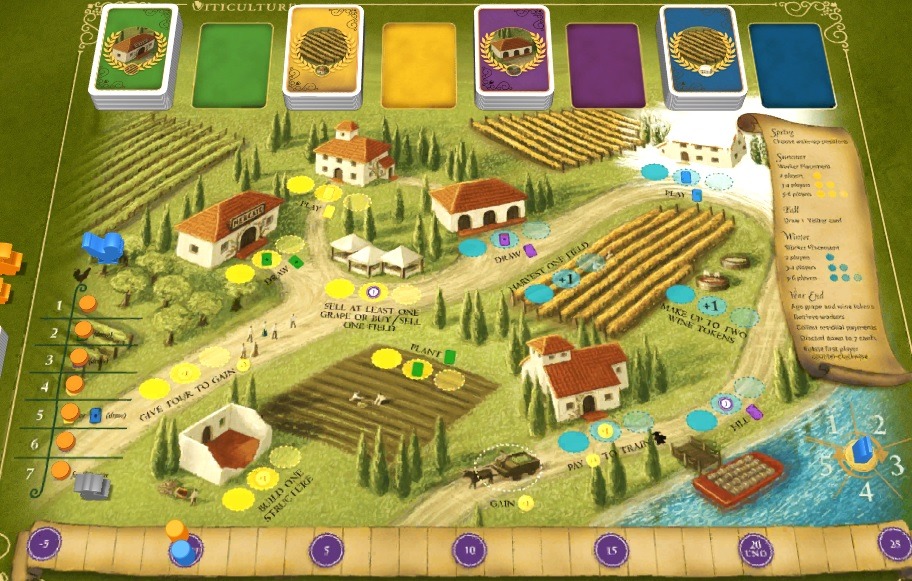
Mechanics
Viticulture combines worker placement mechanics (on the central board) with engine-building mechanics (on your player board). A round is divided into four phases:
- Spring determines the order the workers will be placed. This is done by placing rooster tokens on the Wake-up chart. You can go for late placement and earn some extra victory points that way.
- Next, you place your workers into Summer slots, carrying out actions: draw vine cards, build structures, sell grapes, plant vines, etc.
- In Fall, you will draw visitor cards, which are special one-time bonus cards.
- If you have any workers left, you can place them in the Winter slots: turn grapes into wines, draw wine cards, fill wine orders, train new workers, etc.
Rounds continue this way until one of the players reaches 20 victory points.
To deepen the thematic experience, there are:
- different vine sorts (like Malvasia, Pinot, Merlot, and Chardonnay),
- you can build several structures to enhance your wine-making engine (Trellis, Windmill, Irrigation, Yoke, Tasting Room, Cellars, Cottage),
- certain combinations of grapes can create blush, sparkling, and other high-valued wines,
- wine also ages and gains value that way.
Expansions/editions
In addition to the aforementioned original version, there are several expansions:
- Visit from the Rhine Valley adds eighty more visitor cards.
- Moor Visitors adds forty visitor cards. This expansion is co-designed by Uwe Rosenberg.
- Tuscany Essential Edition is a modular expansion for any version of Viticulture. It contains three modules that can be used in any combination: special workers, extended board, and structures. They add a lot of meat to the core gameplay, making the game deeper, more complex, and more strategic.
Main features
- Cool, laid-back theme.
- Fairly easy to learn.
- Good single-player mode.
- Expansions really round up the game.
Fields of Green
| Designer | Vangelis Bagiartakis |
| Published in | 2016 |
| Players | 2-4 |
| Playing time | 45 minutes |
| Complexity | medium |

Theme
Fields of Green is set on a modern, second half of the 20th-century Western farm. Each player controls a farm, expanding it by adding new tiles: fields, livestock, and facilities, to build an engine that will yield them the most points.
You do all of this with cards. In short, this is 7 Wonders with a farming theme. Well, almost.

Mechanics
The two mechanics that Fields of Green revolves around are card drafting and tile (card) placement.
Over four rounds, players draft cards and then strategically place them in front of them. Cards are drawn from four decks: Fields, Livestock, Construction, and Buildings.
There are dependencies between cards that increase income or score, so you have to physically place some of them together or even in sequences for maximum effect. The completed farm will normally consist of 18-24 cards.
Some cards are triggered immediately or at the end of the round (harvest phase), others only at the end of the game. You can discard unwanted cards to access others or get income. There are three resources you must manage: money, water, and food.
Resources come into play in the harvest phase, where you must pay maintenance, water your fields and feed the livestock.
Fields of Green is focused on engine-building. The correlations of positioning the cards, managing resources, and money all serve the purpose of oiling your points-generating machine.
Expansion
Grand Fair introduces new cards (themed as an agricultural fair) and components for the fifth player.
Main features
- A great mix of card drafting and tile placement to build an engine.
- Easy to learn.
- Little interaction.
Clans of Caledonia
| Designer | Juma Al-JouJou |
| Published in | 2017 |
| Players | 1-4 |
| Playing time | 30 minutes per player |
| Complexity | medium |

Theme
The 19th-century industrial revolution was a time of great change. Scotland was in transition from an agricultural land of the old ways to an industrialized country, focused on trade and export. But the bulk of people still lived off the land.
You play as one of the historic clans, trying to benefit from the newly created situation. Produce, trade, and export agricultural goods and profit from selling your whiskey worldwide.
Check out Isle of Skye, another board game set in pre-industrial Scotland

Mechanics
The game starts by drawing a clan for each player. Clans come with different abilities, some being better in certain areas. This creates asymmetrical gameplay and implementing your clan’s advantages in disadvantages into your strategy is very important.
This diversity also ensures a lot of replay value. Every clan plays differently and there are other game-to-game factors that change (like port tiles, scoring criteria, and contracts that your clans seek to fulfill). All 8 clans are well-balanced, but some are more beginner-friendly than others.
The game is played over five rounds, with each of the rounds consisting of several phases, with the main one being the action phase. Players can perform any number of actions, limited only by the resources they obtain:
- Build things on the map: animals that produce wool or milk, fields that produce grain, workers that increase coin production, or buildings that can convert basic resources into more valuable goods (whiskey, cheese or bread).
- Trade goods on the market. Prices go up or down according to your actions.
- Acquire a contract
- Fulfill a contract, exporting your goods in return for victory points and other rewards.
- Upgrade technology, increase your trading capacity, and grant other bonuses.
Players perform actions one by one until everyone passes. It’s a very elegant soft cap, that doesn’t tie you to any worker slots, dice, or cards, but lets you develop your strategy freely.
Rounds end with production and scoring phases, with an additional final scoring at the end of the game.
Read the full Review of Clans of Caledonia

Main features
- Easy to get into, but still very deep with a lot of complex decisions.
- A lot of replay value.
- Wooden components look and feel great
Wendake
| Designer | Danilo Sabia |
| Published in | 2017 |
| Players | 1-4 |
| Playing time | 60-120 minutes |
| Complexity | medium/heavy |

Theme
One aspect of Wendake that stands out from all other games on this list is the Native American theme. You don’t get many of those in the board gaming world and it’s obvious the designer is a huge history fan.
It’s set in the middle of the 18th century. You control one of the native tribes that inhabited the Great Lakes region.
You will focus on everyday life in your village, fields, and forests. Women will farm beans, corn, and pumpkins, while men hunt for beavers in the forests. French and English are also present, entangled in the Seven Years’ War and it’s your job to manage your tribe economically and militarily and lead them to prosperity.
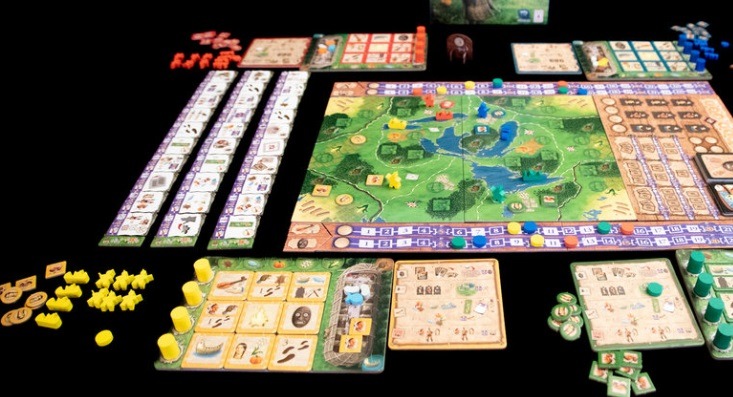
Mechanics
Wendake uses a clever action selection system. Each turn, you can do only 3 actions and you select those from 9 available, which are laid out in a 3×3 grid. The trick is that your actions must be in the same row: horizontally, vertically, or diagonally. The grid changes and progresses (you can buy improved action tiles) as the game moves on, creating a live puzzle.
Your progress is tracked by four different metrics:
- military (expanding on their map),
- economy (trading),
- ritual (recovering injured and exhausted workers)and
- ceremonial masks (collecting sets of them).
You must not neglect any of them, since the two lowest scores will make your final points tally.
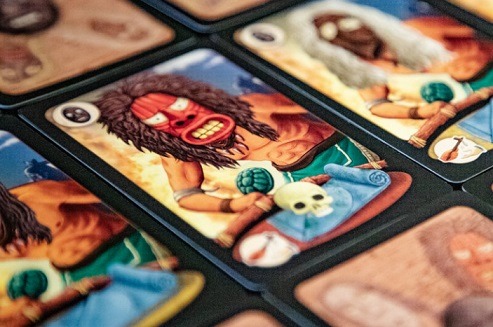
Expansion
New Allies introduces new mechanisms to the core game, with a focus on deepening the interaction with the French and English armies.
Main features
- interesting action selection system,
- unique theme,
- excellent solo mode.
Conclusion
Let’s do a quick recap of the games so that you can better decide which one suits you:
- If you like Uwe Rosenberg, you won’t miss going with Agricola, Caverna, or Fields of Arle. They are excellent worker-placement games, but they do come with a bit of a learning curve.
- Speaking of easy-to-get-into games, Takenoko is everyone’s favorite. Pandas are just cute, aren’t they?
- The next games also feature a very strong theme: Tzolk’in and Wendake focus on Native American tribes, while Viticulture is all about wine-making. La Granja is also Mediterranean flavored, but it’s more about pigs than wine.
- Or if you’re into more modern farming, Fields of Green is a great mix of card drafting and tile placing. With tractors.
- I’ve saved the best for last: Clans of Caledonia is my personal favorite farming game. Very easy to learn, but very deep and hard to master. Offers a lot of variables and replay value, its mechanics are smooth and intuitive and it comes with terrific components. I can’t recommend it enough.
Which one is your favorite farming board game? Is it on my list? Leave a comment below.
Further reading:
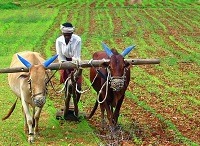












Okay, this is the first farming games that I have ever seen and honestly, it is really nice that there are board games that really teach about farming.
I have a small garden at home and like you said, I really love to see my plants grow out of nothing and I will really love to play the game so that I will really like to play at least two of the games that you mention here. Which of them do you think is beginner-friendly?
As I said Takenoko is the simplest game on the list. It’s very easy to learn and has an adorable theme. I highly recommend it.
If you’ve played a board game or two before, then get Clans of Caledonia. It may be intimidating when you open the box and see all the components and the manual, but once you start playing it’s one of the more elegant and intuitive games. It’s my favorite for a good reason.
I have quite a lot of the games on your list and I enjoy playing them all. My favourite game is also Clans of Caledonia.
However, I think there is another great farming game that is missing on your list: Lowlands.
Lowlands is set in my country – The Netherlands – and it deals with the ungoing struggle against floods and storm surges. As sheep farmers try to manage your farms and work together to build the dike.
Yes, Lowlands has been on the shortlist and didn’t make it on the final list. But it was close. 🙂